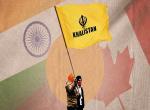In less than a year, the Daesh as come a long way from being considered as the world’s wealthiest terror organisation in 2014, to struggling to finance its operations in 2016. In mid-2015, Daesh’s overall monthly revenue in the territories under its control in Syria and Iraq was estimated at US$80 million but plummeted to US$56 million in March this year. This has come about with the destruction of several oil fields by air campaigns conducted by the United States (US)-led coalition and that of the coordinated efforts between Russia and its allies. Recently, the airstrikes also destroyed up to US$800 million of the outfit’s cash stockpiles. As a result, a direct impact is being felt by the fighters and the outfit is believed to be also struggling to maintain its military infrastructures.
Moreover, oil-trade has become more difficult due to the recapture of strategic cities (in Syria and Iraq) which were once used as routes for illegal trade, movements of fighters and smuggling (particularly along Turkish borders). Earlier, a significant amount of oil was reportedly marketed within Iraq and in Daesh-controlled and rebel-held territories in northern Syria.1
Beyond the borders, Turkey has been indentified as an alleged buyer of such oil. The airstrikes has resulted in destruction of almost 30 per cent of the outfit’s oil infrastructures.2 The production capacity has dropped from 33,000 barrels per day (bpd) to 21,000 bpd, during the same period.3
With decline in oil trade, Daesh is gradually shifting towards imposing different forms of taxes on the population. The jizyah or taxation from the non-Muslims (particularly Christians) is an example. It has been collecting monetary fines from people who are unable to answer correctly on question related to the holy Quran, or anyone found violating the Sharia law.4 Extortion, kidnapping, smuggling of arms, drugs, and private funding are some of their prime sources of revenues. The outfit levies heavy taxes on people’s income, and collects fees for usage of basic facilities such as water, electricity and cellular mobile services.
Considering the growing crises, Daesh is likely to make unrelenting efforts to retain those territories which are still under its control. This will help the outfit in generating funds from the remaining oil they still possess, continue running extortion business and to train foreign fighters.
An Iraqi military strategist has cautioned that the present financial crisis is unlikely lead to the collapse of the caliphate as Daesh “still have 60 percent of Syrian oil wells and 5 percent of Iraq’s.5” This proposition has certain relevance as the outfit continues to show signs of resilience despite military setbacks. Without recapturing all the territories, efforts to cut all the financial lifelines will be a huge challenge for the allies involved in the fight against the outfit.
Recruits-related Crisis
The other problem Daesh is facing has arisen because it has reduced the salary of the fighters in Syria and Iraq by almost 50 percent. While is its unclear as to how much amount every fighter was paid during the outfit’s heyday, the reduced monthly salary for Syrian fighters is now estimated at US$200 and US$400 for foreigner fighters.6 Apparently, the perception that outsiders are paid higher on the grounds that they have left behind their comfortable lives has triggered serious “ire and resentment of local ISIS members.”7 Such an anomaly has given rise to internal discord amongst ISIS cadres. The foreign recruits have been blamed by the locals for the fall of territories due to their incompetence, and there are complaints pertaining to their disregard for local culture, traditions and tribal structures.8 The former rationale somehow fits well into the assumption that the fighters, mainly from India, Pakistan, Bangladesh and Africa are inferior and “expendable” as compared to the Arabs and the Western counterparts.9
Further, there is also a belief that the estrangement is caused due to the dominant nature of the foreign recruits over the local fighters. An amalgamation of these factors is leading to a serious internal chaos within the group.
Subsequently, there is a rising rift between the fighters—locals and the foreigners—resulting into a decline in the influx of foreign recruits. From an average influx of about 1,500-2,000 fighters (monthly) till recently, the current speculated number is between 200 and 500.10 This is a major setback for the outfit which had once boasted about its ability to recruit thousands of fighters from across the globe.
The increasing challenges within Iraq and Syria are apparently leading to the expansion of Daesh activities elsewhere, and the outfit has begun adopting new strategies or tactics. The increasing Daesh-connected activities in North Africa, Europe, Afghanistan, Bangladesh and Southeast Asia are the manifestations. Some of the foreign recruits, in all likelihood, will start moving towards other places where the outfit has established links or drawn supports. The attackers in Paris and Brussels were once in Syria where they received training. There is likely to be recurrences of similar assaults, particularly in other parts of Europe.
This is also primarily because there are already Islamist networks in quite a few European countries which are capable of providing logistical supports for carrying out attacks. With their back-up and adequate financing Paris/Brussels-like carnage will not remain an impossible task. As estimated by an American terror-financing analyst, the total cost for the Brussels attack was between US$10,000 and US$15,000, which according to him is “cheap.”11 Orders for further attacks need not come from the leadership in Syria but can be executed by the returnees or local outfits which have been heavily influenced by Daesh. The continuous evolution of extremism or jihadism will sustain these radical elements, whether the Sunni outfit is destroyed or not.
Conclusion
The crises within the outfit in Syria and Iraq have developed at this juncture when hostile activities by Daesh are on the rise in different parts of the world. In the wake of this, the call of the hour is to intensify the crackdown on terror networks, their financers, and most importantly, the process of radicalisation and recruitment should be countered. Moreover, the myths and the fallacious idea of establishing an Islamic state needs to be destroyed ideologically. These are apart from the measures to be taken up by intelligence and security establishments. It will be foolhardy to be under the impression that mere territorial losses and financial degradation will make Daesh extinct.
Endnotes:
- Erika Solomon, et al., “Inside Isis Inc: The Journey of a barrel of oil”, Financial Times, 29 February 2016. On Turkey, see David L. Phillips, “Research Paper: Turkey-ISIS Oil Trade”, The Huffington Post, 15 December 2015.
- Benoit Faucon and Margaret Coker, “The Rise and Fall of Islamic State’s Oil Tycoon”, The Wall Street Journal, 24 April 2016.
- Isis revenue drops nearly a third after loss of territory shrinks tax base”, The Guardian, 18 April 2016.
- “ISIS is struggling to fund its war machine”, CNN Money, 21 April 2016.
- Jobby Warrick and Liz Sly, “U.S.-led strikes putting a financial squeeze on the Islamic State”, Washington Post, 2 April 2016.
- “Islamic State to halve fighters' salaries as cost of waging terror starts to bite”, The Guardian, 20 January 2016.
- Brad Nelson and Yohanes Sulaiman, “How Internal Division Could Shatter ISIS”, The National Interest, 8 April 2016.
- Matt Bradley, “Rift Grows in Islamic State Between Foreign, Local Fighters, The Wall Street Journal, 25 March 2016.
- “ISIS Considers Indian Recruits Inferior to Arabs, Treats Them as Cannon Fodder: Report”, NDTV, 23 November 2015.
- Warren Strobel and Phil Stewart, “U.S. military softens claims on drop in Islamic State's foreign fighters”, Reuters, 28 April 2016.
- “U.S. Military Campaign Takes Toll on ISIS’ Cash Flow”, The New York Times, 12 April 2016.
Published Date: 11th May 2016, Image Source:http://ichef.bbci.co.uk
(Disclaimer: The views and opinions expressed in this article are those of the author and do not necessarily reflect the official policy or position of the Vivekananda International Foundation)











Post new comment